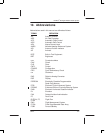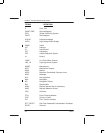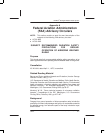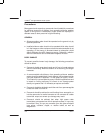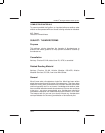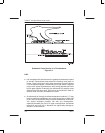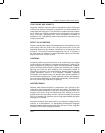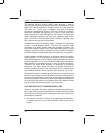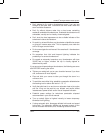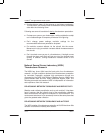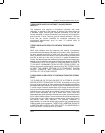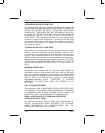
PRIMUS
R
660 Digital Weather Radar System
A28–1146–111
REV 2 A–5
Federal Aviation Administration (FAA) Advisory Circulars
TURBULENCE
D Potentially hazardous turbulence is present in all thunderstorms,
and a severe thunderstorm can destroy an aircraft. Strongest
turbulence within the cloud occurs with shear between updrafts and
downdrafts. Outside the cloud, shear turbulence has been
encountered several thousand feet above and 20 miles laterally
from a severe thunderstorm. A low level turbulent area is the shear
zone associated with the gust front. Often, a roll cloud on the leading
edge of a storm marks the top of the eddies in this shear and it
signifies an extremely turbulent zone. Gust fronts move far ahead
(up to 15 miles) of associated precipitation. The gust front causes
a rapid and sometimes drastic change in surface wind ahead of an
approaching storm. Advisory Circular 00–50A, ”Low Level Wind
Shear,” explains in greater detail the hazards associated with gust
fronts. Figure 1 shows a schematic cross section of a thunderstorm
with areas outside the cloud where turbulence may be encountered.
D It is almost impossible to hold a constant altitude in a thunderstorm,
and maneuvering in an attempt to do so produces greatly increased
stress on the aircraft. It is understandable that the speed of the
aircraft determines the rate of turbulence encounters. Stresses are
least if the aircraft is held in a constant attitude and allowed to ride
the waves. To date, we have no sure way to pick soft spots in a
thunderstorm.
ICING
D Updrafts in a thunderstorm support abundant liquid water with
relatively large droplet sizes; and when carried above the freezing
level, the water becomes supercooled. When temperature in the
upward current cools to about –15 _C, much of the remaining water
vapor sublimates as ice crystals; and above this level, at lower
temperatures, the amount of supercooled water decreases.
D Supercooled water freezes on impact with an aircraft. Clear icing
can occur at any altitude above the freezing level; but at high levels,
icing from smaller droplets may be rime or mixed with rime and clear.
The abundance of large, supercooled droplets makes clear icing
very rapid between O _C and –15 _C and encounters can be
frequent in a cluster of cells. Thunderstorm icing can be extremely
hazardous.




